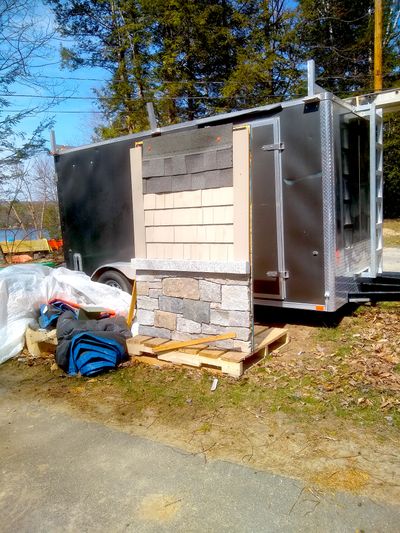Ask the Builder: Avoid decision paralysis with test panels

Q. I’m getting ready to build a new home and am terrified about making a wrong decision about the materials on the outside of my home. I’m afraid they won’t look good with one another. I have the same issue with paint colors and even flooring. I’m becoming paralyzed with fear, as I don’t want to have to do things over. I don’t have an endless supply of money. What can I do to relieve my anxiety? – Mary A., Ft. Wayne, Ind.
A. You’re in fine company, as many people second-guess their choices of products and finishes even in small remodeling projects, not to mention the hundreds of decisions that must be made with a new home. Some are so terrified that they refuse to build a new home.
There are several things you can do to relieve your anxiety and get it right the first time. Let’s address the primary concern about the exterior of the home.
Architects have known how to solve this problem for many decades. I’ll never forget going to downtown Cincinnati for a meeting about 20 years ago. I was driving past the headquarters of Procter and Gamble. There I saw standing out in the middle of this open area a full-scale section of what would become a massive pergola.
The architect had commissioned it to be built to show the decision-makers at P&G exactly what the giant outdoor structure would look like. I wish I had taken a photograph of it because when you look at the finished project (you can see it on Google street view), the massive finished structure matches the sample prototype perfectly.
Any builder can do the same with a sheet of plywood and a few 2x4s. In fact, a new home is being built across the lake from mine right now, and either the architect, the builder or the homeowner requested an exterior test wall panel be built to show how the stone wainscoting will look with the siding and roof shingles.
It’s key to put these panels in the same orientation of the primary house wall – say, the front of the house, if that’s what you’re worried about when visitors come to your home. You want the sunlight to hit the test panel just as it will when your home is complete.
I’ve often suggested this exact same advice when it comes to doing visual and durability tests for products. I’ve answered hundreds of requests on my Ask Tim page at askthebuilder.com about this conundrum.
You might want to know how a certain flooring will hold up in your kitchen, for example. I suggest you get a thin piece of plywood or cement board and create a small test section and lay it down over your current kitchen floor. Walk on it for three months. See how easy it is to maintain. See how you like the color and pattern.
Here’s another interesting example. Years ago, I had to apply traditional whitewash to a giant room addition I had built for a very picky customer. The existing house was whitewashed and done in a way where it looked faded with some brick not even covered.
The homeowner wanted the room addition to look as if it had been built with the house. There was no chance for a mistake. We built a small test section of brick wall and tested methods of how to apply the lime whitewash and get the desired look.
I wrote about this whitewash, as well as the secret recipe for it, and you can locate it on my website. Don’t think that thinned-down white paint is whitewash. That’s hogwash you’re seeing on those questionable cable TV shows!
Paint colors are somewhat easier to deal with. When it comes to exterior paint colors, all you need to do is drive around your neighborhood or town and find a house that’s painted in the colors you love.
Take lots of great photographs of the house from the street and then go to a paint store to get small cans of paint that match what you saw.
Paint a small section of your home, or create a test panel, and look at it. Don’t make the mistake of viewing it standing four feet back. You need to step back 50 or 70 feet to see it as you would driving by in a car. Be sure to look at the colors at different times of day as the colors can change a bit as the sun color temperature changes.
The small amount of time and money you’ll spend to create these test panels are well worth it. A smart contractor will do this if he suspects a customer could require him to do a job over. If the customer signs her/his name with a big Sharpie marker that the test panel is acceptable and the finished work matches the test panel, then the work stands.
The same is true for you as a homeowner. If you love the test panel and the quality you see, then have the contractor sign it. Don’t get rid of the test panel until the entire job matches it. This isn’t rocket science, after all.
Subscribe to Tim Carter’s free newsletter and listen to his new podcasts at askthebuilder.com.